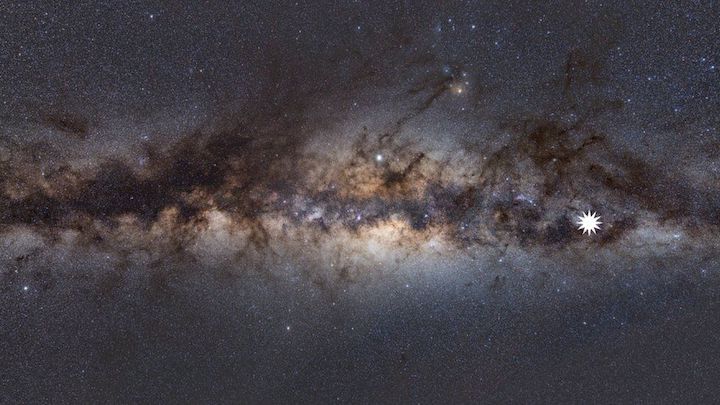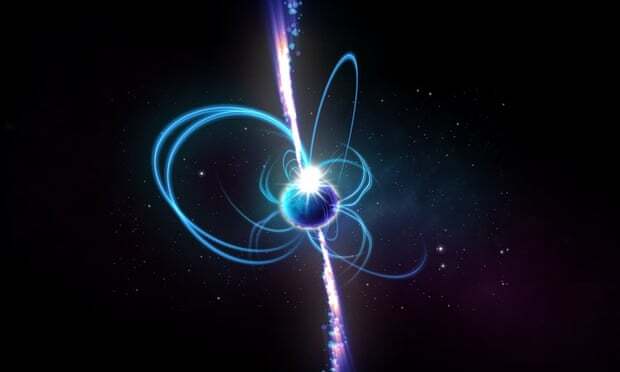Astronomers have discovered a mysterious object emitting a radio wave beam that pulsed every 20 minutes.
The team behind the discovery believe the object could be a new class of slowly rotating neutron star with an ultra-powerful magnetic field. The repeating signals were detected during the first three months of 2018, but then disappeared, suggesting they were linked to a dramatic, one-off event, such as a starquake.
“It was kind of spooky for an astronomer because there’s nothing known in the sky that does that,” said Natasha Hurley-Walker, from the Curtin University node of the International Centre for Radio Astronomy Research, who led the team that made the discovery.
Despite the unusual nature of the signal, the team believe the source is likely to be a spinning object rather than a technologically advanced civilisation reaching out across the cosmos.
“It’s definitely not aliens,” said Hurley-Walker. The team briefly considered this possibility, but ruled it out after determining that the signal – one of the brightest radio sources in the sky – was detectable across a broad spectrum of frequencies, meaning that an immense amount of energy would have been required to produce it.
The object, believed to be about 4,000 light years away in the plane of the Milky Way, also matches a predicted astronomical object called an “ultra-long period magnetar”, a class of neutron star with the most powerful magnetic field of any known object in the universe.
“It’s a type of slowly spinning neutron star that has been predicted to exist, theoretically,” said Hurley-Walker. “But nobody expected to directly detect one like this because we didn’t expect them to be so bright.”
A neutron star is the dark, dense remnant left behind after a supermassive star casts off its outer material in a supernova and undergoes gravitational collapse. Reduced to the size of a small city, neutron stars initially spin incredibly quickly – just as a figure skater accelerates in a spin as they pull their arms in to be more compact.
Fast-spinning neutron stars are detectable as pulsars that flash on and off within milliseconds or seconds.
Over time, the neutron star would lose energy and slow down. “But as they slow down you’d expect them to fade away,” said Prof Andrew Norton, an astrophysicist at Open University. “Once they drop below a theoretical calculation known as the death line, you shouldn’t be able to see them.”
Astronomers are perplexed as to why the newly found object – if it is a magnetar – was still emitting enough energy to be detectable when it was observed between January and March 2018. “Somehow it’s converting magnetic energy to radio waves much more effectively than anything we’ve seen before,” said Hurley-Walker.
Another question is why the signal then vanished. One possibility is that the signals are linked to a transient event such as a starquake, in which the neutron star’s incredibly dense crust undergoes a sudden adjustment releasing a large blast of energy into space and, potentially, repeated pulses of radio waves after the event.
The findings are published in the journal Nature.
Quelle: The Guardian


